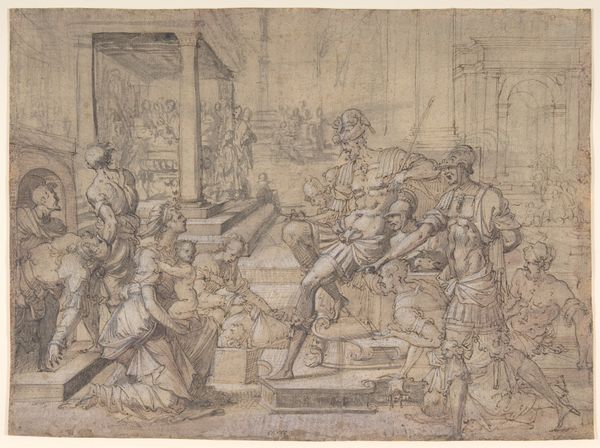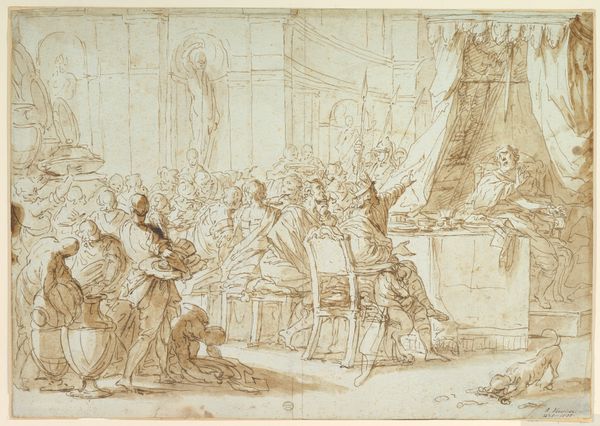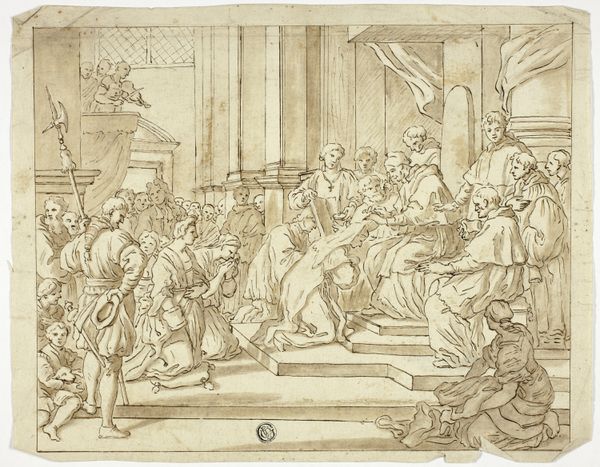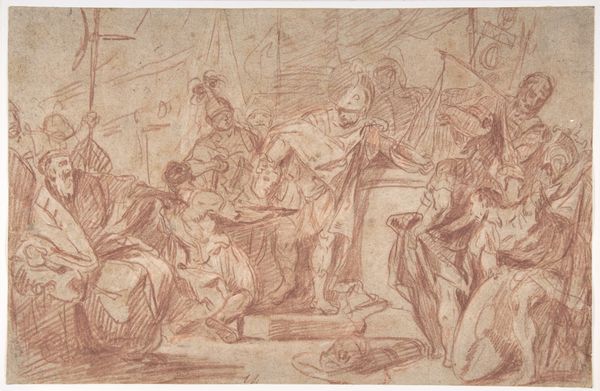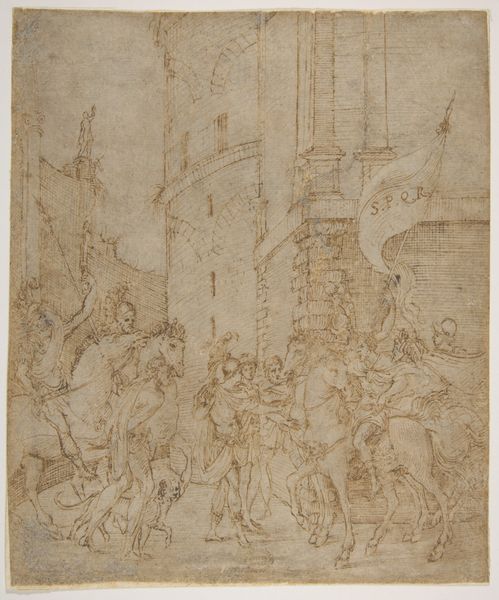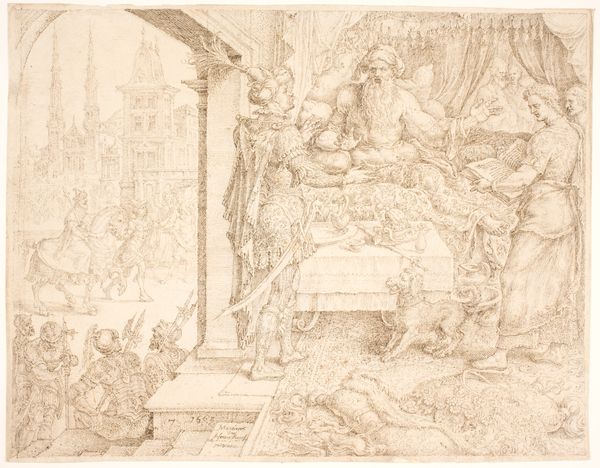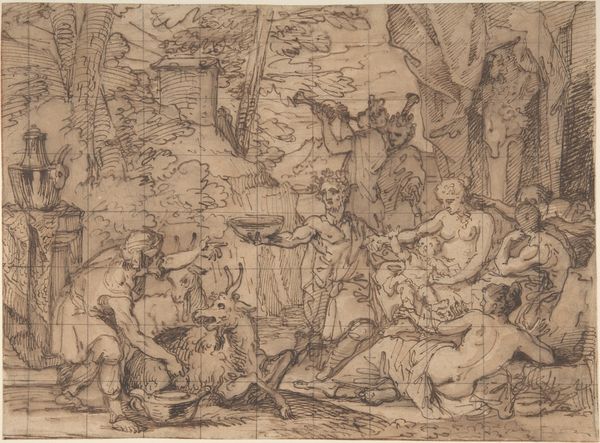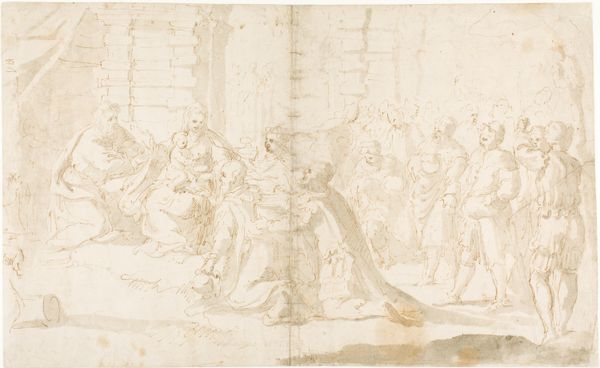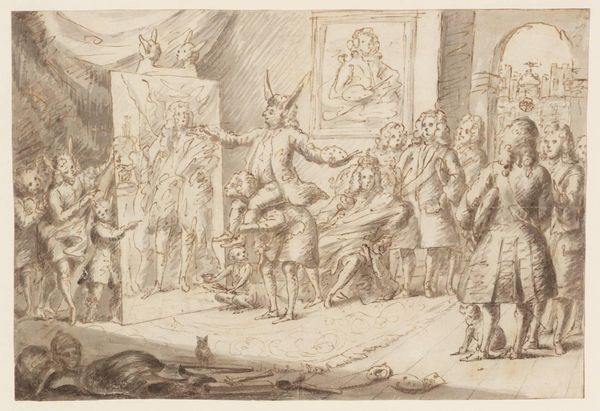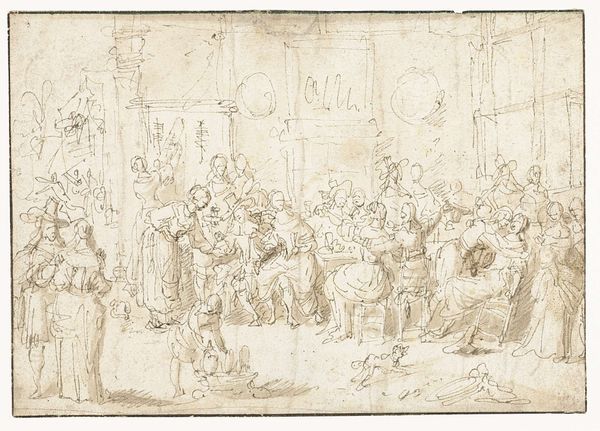
drawing, print, ink
#
drawing
#
ink painting
# print
#
pencil sketch
#
figuration
#
11_renaissance
#
ink
#
men
#
history-painting
#
italian-renaissance
#
building
Dimensions: 9-5/8 x 11-1/4 in. (24.5 x 28.6 cm); maximum (lower half of sheet made up)
Copyright: Public Domain
Curator: Let's take a look at "Building," a striking drawing by Cesare Nebbia, created sometime between 1536 and 1614. Editor: It gives me the impression of monumental labor, all captured in this faded, almost ethereal sepia tone. I am struck by the number of men involved, the variety of their poses, and the sheer physicality. It's… chaotic, almost. Curator: Nebbia was known for his ceiling decorations in Roman churches, and this piece offers us insight into the visual culture of construction. Notice the figures carrying blocks—symbols of collective effort and aspiration in many cultures—all orchestrated by someone of rank. Editor: You can certainly see the hierarchy being visually enforced here. There’s the figure in armor seemingly directing operations while other men visibly toil, lifting stones. How might their respective burdens of power be understood? The man's authority depends entirely on their efforts, and perhaps his own design limits his own creativity by directing theirs? Curator: The architectural drawing that the main figure is gesturing towards certainly implies that. We often see buildings representing social order, stability and shared values, the plan laid out for all to follow, while they’re left hauling heavy burdens in service of it. Editor: The men carrying materials—one on a ladder—become stand-ins, embodiments of a whole workforce relegated to the foundations. The Renaissance project of 'building' a new society really had uneven costs, visible here even through idealized bodies. The fact that they’re undressed adds to it –they symbolize something ancient, timeless labor, bodies exposed for building. Curator: It could be seen as allegorical too – perhaps a study representing the arduous construction of the Church. Note the classical references: the armor, the dynamic poses which suggests he may be nodding to Roman architectural imagery in its own right. Editor: True, these references create layers; simultaneously recalling the glory of Rome and the exploitation inherent in those projects. Nebbia seems aware of that dualism and I'm particularly stuck by the ways historical tropes about laborers end up shaping his aesthetic choices. Curator: Indeed, a visual reminder that even in grand achievements, individual stories and realities may be hidden, but it remains critical to acknowledge them nonetheless. Editor: I think, ultimately, Nebbia makes us think not only about what it means to build a structure, but what societal elements are forgotten along the way.
Comments
No comments
Be the first to comment and join the conversation on the ultimate creative platform.
